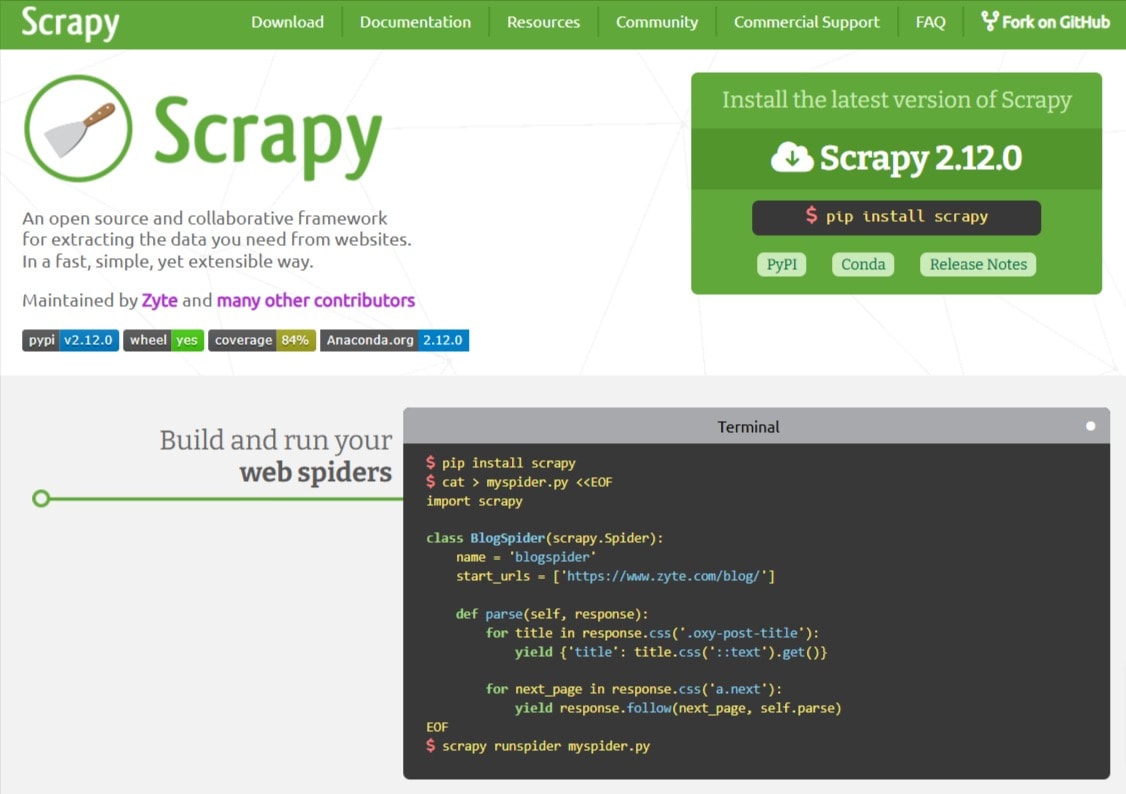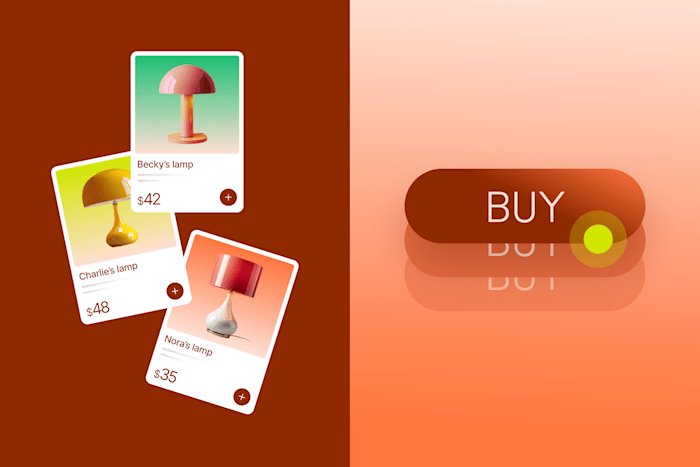How To Create a Shopping Bot in 2025
We answer all these questions and provide guidance on where to find reliable developers to help you build a shopping bot.
 December 16, 2024
December 16, 2024 9 minute reading
9 minute reading
Online shopping bots can help your company maintain a competitive advantage by monitoring prices or making automated purchases.
Is that even legal? Is it ethical? If it is, how do you create one?
In this article, we answer all these questions and provide guidance on where to find reliable software developers to help you build a shopping bot.
Types of bots
Online bots fall into three main categories:
Online store chatbots: These chatbots are provided by the store itself to improve customer satisfaction and conversion rates. The bot runs on the ecommerce website and often doubles as a shopping assistant. Some store chatbots integrate with social media so users can share products on their feeds.
Messenger bots: These bots use message automation to help ecommerce sites improve the customer experience. They can offer customer support via messenger apps, including WhatsApp, Facebook Messenger, Telegram, and custom apps. They can also act as a shopping assistant, suggesting products for customers, and carrying out the checkout process.
Shopping bots: You operate these bots yourself to help you compare prices, find better deals, and make automated purchases where possible. The bot runs on your computer or is hosted as a web service.
An example of an online store shopping chatbot is the Amazon Assistant, which uses artificial intelligence (AI) and natural language processing (NLP) to understand what customers are looking for. The bot uses advanced conversational AI to respond to customer queries and make product recommendations.
Amazon uses proprietary technology for its AI chatbot. However, many other types of AI chatbots exist to help ecommerce stores reduce cart abandonment. For example, if you use Shopify in your ecommerce business, several AI chatbot plugins integrate with Shopify to help you respond to customer needs in real time.
You can also find AI chatbot development services on Fiverr to build one for you.
Types of shopping bots
Shopping bots are more customized than online store chatbots and messenger bots. They typically fall into the following major categories:
Price comparison bots
These shopping bots compare prices across ecommerce websites. For example, you might want to create a price comparison bot to monitor Amazon’s prices with your Shopify or WooCommerce store so you can stay competitive.
These bots are also useful if you run a price comparison website that sends affiliate traffic to the site with the lowest price.
Inventory monitoring bots
Inventory monitoring bots are less common than other shopping bots.
These bots can track competitor stock levels to assess demand. Additionally, you could pair this type of bot with an ordering bot to purchase remaining stock from a website, allowing you to resell it at a higher price.
Automated purchasing bots
These bots are challenging to create because of anti-bot code, captcha challenges, and credit card verification systems. However, not all websites and platforms implement these additional security features.
One option to get around this obstacle is to design a shopping bot that handles the entire checkout process up to the point of verification, then sends notifications—via email, SMS, or mobile alerts—prompting you to complete the final steps for the purchase.
Discount tracking bots
Discount tracking bots monitor an item’s regular price and send notifications or take action when that price changes.
Building this bot requires a backend database that stores historical price info.
You can also use machine learning to create a more sophisticated bot that predicts upcoming discounts and sales based on historical trends.
Sneaker bots
The sneaker bot is a special automated purchasing bot designed to purchase limited-availability stock. They’re called “sneaker bots” because they were originally designed to buy limited-edition sneakers in bulk so companies could resell them at a profit.
Sneaker bots are sometimes also called “shoe bots.”
Sneaker bots aren’t illegal, leaving it up to ecommerce platforms and site owners to develop software that prevents “botters” from monopolizing stock of limited-edition releases. Shopify, for instance, has implemented significant measures to counter this, such as blocking transactions that align with the typical purchasing patterns of bots.
Find an Expert Chatbot Developer for Hire
Technical requirements for a shopping bot
Each type of shopping bot is unique, requiring slightly different technologies to implement. The exact procedure can be sophisticated, but here are some common points:
Web scraping
Web scraping is automatically grabbing data directly from a website’s interface. Before APIs, web scraping was the only way companies could get information from online services.
If the website you want to run the shopping bot on doesn’t provide an API, you’ll need to use web scraping to get the data you need.
To scrape websites accurately, you need an in-depth understanding of HTML, JavaScript, and CSS (cascading style sheets). You’ll also need knowledge of web scraping frameworks such as Scrapy (Python), Goutte (PHP), or Kimura (Ruby).

Scrapy
Many other web scraping frameworks exist, and choosing one depends largely on the programming language you decide to use.
Knowledge of bot detection tools
Ecommerce websites constantly improve their bot detection mechanisms. Some of the most popular ways to detect bots are:
Blocking excessive requests from one IP address
Blocking repeated purchases with the same billing or shipping address
Captcha challenges
Other proprietary detection mechanisms
Ecommerce sites might add new blocking features anytime, so you must monitor the shopping bot frequently to ensure it’s still working.
Knowledge of these mechanisms and how to get around them is essential to creating a successful shopping bot.
API integration
Your shopping bot is more likely to operate successfully when using APIs instead of relying on web scraping.
While the specifics of API integration can vary between services, the overall process is generally consistent.
Hosting
Your shopping bot will run either in the cloud or on a local computer.
If you operate it in the cloud, make sure you can regularly change the bot’s IP address.
Deciding to run the bot locally or in the cloud might also play a role in what programming language you use because specific environments only support certain programming languages.
Programming languages
You can create a shopping bot in any programming language. However, some languages provide more libraries and frameworks for reading and understanding HTML. A few excellent choices for bot creation are:
Python
C#
VB .Net
PHP
In addition to the languages above, you’ll almost always need a thorough knowledge of JavaScript because it runs in the browser. A sophisticated shopping bot that uses web scraping is unlikely to function without JavaScript code.
Backend database
For discount bots and price comparison bots, you’ll need a backend database to store historical price data. You can use any database that your chosen programming language supports.
Browser automation tools
Many shopping bots use browser automation through Selenium, Puppeteer, or Playwright.

Selenium
The automation can run in a normal browser or a “headless” browser, which is a browser without a user interface.
How to develop a shopping bot
Many self-service, no-code platforms can help beginners create bots for ecommerce sites, but building a shopping bot usually requires programming skills.
In some cases, you might be able to create a simple shopping bot using Selenium for browser automation. For more sophisticated tools, you’ll likely need to hire a professional software developer to help you, or at least start out with a software development consultation.
Here are the steps to get started:
1. Plan your bot
Define the purpose of your bot. Will it be a sneaker bot or a price comparison bot? The type of bot will determine the technology and environment you must use.
Then, determine what data points the bot must collect and operate on, such as price, discount, or product info.
Choose which websites the bot will visit. If the list is likely to change, you’ll need to build the option to configure these later.
Figure out if you’d like to interact with the bot or if it’ll operate autonomously. Building a bot with an interactive interface will make it easier for you to work with it later, but development might be more costly.
Ask yourself if the bot will run from your local machine or if you’ll operate it from the cloud.
2. Set up the development environment
Your development environment depends greatly on the answers to step one above. However, in all cases, it’ll typically include installing most of the following:
Docker container: A lightweight containerization tool to manage your environment.
Code editor or IDE: A development platform tailored to your programming language.
Web scraping frameworks: Tools like Scrapy (Python) or Kimura (Ruby) to extract data from websites.
Supporting frameworks: Additional tools specific to your bot's functionality.
Local server: For testing before deploying the bot.
Database: To store and manage data, such as historical pricing.
Debugging tool: Software to identify and fix bugs during development.
Version control tool: For managing and tracking code changes efficiently.
3. Create the basic bot architecture
It’s time to get into how your bot will work in real life. If you did step one thoroughly, creating the basic bot architecture should run smoothly. If you didn’t, you’ll discover those shortcomings here and likely go back to step one to think through again how the bot should work.
Your architecture will typically include:
Data collection methods: Techniques for gathering the required information, either through APIs or web scraping.
Database schema or data model: The organizational structure for storing data using traditional database schemas or alternative models based on the storage system.
Rate-limiting procedures: Methods to control the frequency of bot requests to avoid detection or being blocked by the target website.
Error-handling: Strategies to manage and resolve unexpected issues or disruptions during the bot's operation.
Logging functionality: A system to record the bot's activities, enabling easier debugging and performance monitoring.
Alert system: Notifications that inform you if the bot encounters access issues or is blocked from the target website.
4. Implement your shopping bot
It’s time to start programming components for the shopping bot. The exact steps here depend on the programming language and type of bot you’re implementing.
In some cases, you’d also build a user interface or control panel for the bot.
5. Test and deploy
No software is complete without thorough testing. You first begin with small unit tests, then live production tests.
After all the testing is completed, you must continue to monitor the tool intensively until you’ve handled all major bugs. You can let the built-in alert system take over to inform you if the tool stops working at any point.
A shopping bot might work fine for months and suddenly break when the target website changes its HTML or has a redesign, so maintenance is key.
Legal and ethical considerations
The following isn’t legal advice, and you should consult with an attorney on any legal matters. You can also buy legal consulting services from Fiverr experts.
However, the consensus is that shopping bots are not illegal.
Many websites include terms and conditions (T&Cs) that say you’re not allowed to use automated software on their site. However, violating a website’s T&Cs is not a crime in the United States, according to a federal court ruling passed in 2020. The judge in the case said, “Criminalizing terms-of-service violations risks turning each website into its own criminal jurisdiction and each webmaster into his own legislature.”
That being said, if a company publishes T&Cs that specifically disallow using a bot on its website, that company has every right to block you from using its service in the future if it discovers you’re violating those terms.
Various computer laws exist in every country, stating clearly which types of actions are illegal. For example, developing a “shopping bot” that gains unauthorized access to other users’ credit card details to commit fraud would be illegal.
Even though a shopping bot might be legal, ethical considerations also exist. For example, a bot designed to buy up all the stock designated for people in need so you can sell it to them at an unaffordable price is likely unethical.
Whenever you create a shopping bot, ensure that it doesn’t violate any laws, then establish if the bot’s purpose is ethical. The answer to whether something is illegal is usually black and white. Ethical questions are for each person to decide.
DIY vs. professional development
Unlike customer service chatbots and shopping assistants, you’re almost always likely to need professional software development services to build a shopping bot. It might be possible to use an AI tool such as ChatGPT or Claude to generate the basic Python code for a rudimentary shopping bot. However, the best shopping bots often include many of the following advanced features:
Rate-limiting: To minimize the risk of being blocked by ecommerce sites.
Robust web scraping: For efficient and reliable data collection.
A reliable backend database: To store and manage critical data.
API-integration: For seamless interactions with target websites.
User-friendly interface: Making it easy to monitor and control the bot’s actions.
Some of the skill requirements for developing a shopping bot are:
Programming skills: Proficiency in one or more programming languages.
Web development knowledge: Familiarity with HTML, CSS (Cascading Style Sheets), and JavaScript.
API expertise: Understanding how to integrate and interact with relevant APIs.
Browser automation knowledge: Skills in tools and techniques for automating browser tasks.
No cookie-cutter template exists for building a shopping bot. The bot must be designed as described earlier and programmed to match those specifications.
The lack of a fixed template for creating a shopping bot also means you’re unlikely to find many tutorials on how to build one that matches your exact needs.
Shopping bots are typically highly customized tools that require an in-depth understanding of programming to create.
Once the bot is created, you’ll likely need to maintain it because ecommerce sites continue to improve their bot detection capabilities. Monthly maintenance can be a time-consuming hassle when doing it yourself.
Unless you’re an experienced programmer with plenty of time, we recommend hiring a pro software developer to help you build and maintain your shopping bot.
Hire a bot developer on Fiverr
Developing a sophisticated shopping bot can be a daunting task.
Fiverr has expert software developers across multiple fields and in all major programming languages. You can hire a developer to create your entire shopping bot from scratch or find an expert to help you with only part of it, such as the API integration.
Finding a developer to match your needs is easy. You can either search by expertise using Fiverr’s built-in search engine, navigate the service categories in the top menu, or use Fiverr Neo—Fiverr’s AI tool—to help you.
To get started, open an account on Fiverr today.
Create a shopping bot FAQ
Are shopping bots illegal?
Although we can’t provide legal advice, shopping bots are typically not illegal. However, if your bot acts in a way that violates the law, such as stealing credit card information, then it is illegal.
How can I create a shopping bot?
Creating shopping bots is more complex than building ecommerce chatbots. While many services simplify the creation of ecommerce chatbots and shopping assistants, developing a customized shopping bot typically requires hiring a professional developer.
What is a shopping bot?
A shopping bot is an automated tool that performs actions on a website related to purchases, such as comparing prices, monitoring discounts, or automatically buying goods on your behalf.
What programming tools or frameworks should I use to create a shopping bot?
The tools and frameworks you choose depend on your bot’s functionality. For backend development, Python frameworks like Flask or Django are excellent options. For the front end, React or jQuery are good options. If you’re building a complete app,you’ll want to take a different approach.


